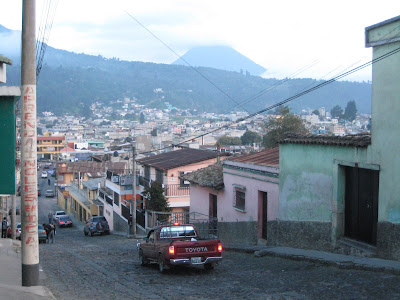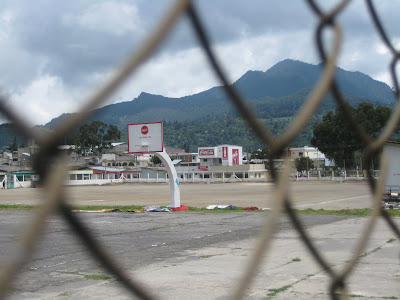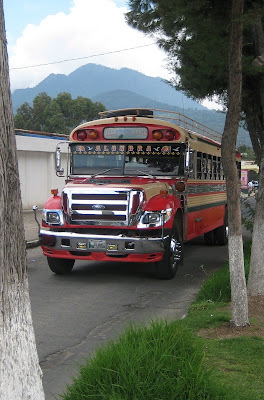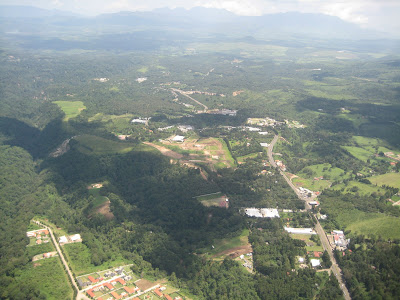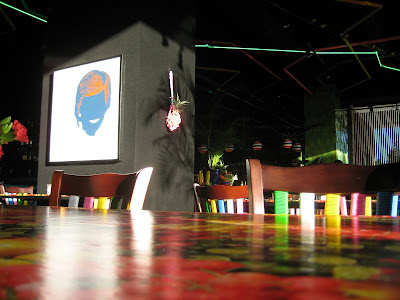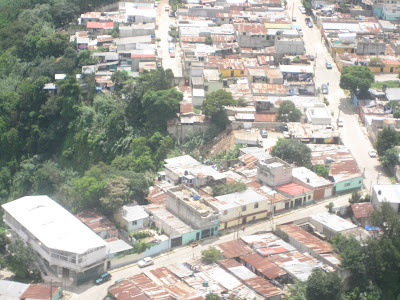During my last week in
My first destination was Lago de Atitlan, a massive, dazzlingly beautiful lake two hours east of Quetzaltenango by way of CA-1, the Central American highway. The 50-square mile body of water is rimmed by steep volcanoes and dotted with a dozen small Mayan pueblos and a handful of larger towns. I spent three days at there, boated, kayaked, and hiked an exquisite, mist-shrouded trail to Indian’s Nose, a peak that, while small, nonetheless affords an ideal view of the water and surrounding topography. I could have stayed all week at The Lake, as it's known, but there were simply too many other places to see. From there, I headed south, where an overnight sojourn in
The next morning, Wednesday, I felt my time in this beautiful country slipping away. After making frantic arrangements, I caught a bus north, planning as I went. I managed a fumbling conversation with the driver about my intended destination, the Biotopo del Quetzal, and as darkness set in, the bus dropped me--and only me--along the side of the road near this secluded nature preserve nestled in the cloud forests of central
My time at the Biotopo del Quetzal was surreal. After hiking up the highway a bit, I came to the Eco Hospedaje, a modest hostel, and was greeted by a woman who I assume was the co-proprietor. Friendly but reserved, she showed me to a simple room and asked what she could cook me for dinner. The hospedaje was nearly deserted, and the evening was eerily quiet. I ate and returned to my room. The only other guest I saw all night was a colossal spider—a leaden ball, like musket shot, with thick jointed fork tines for legs. As I went to wash my face before bed, the creature greeted me, silently, from atop the shower curtain. A flip-flop was the sturdiest weapon I could find, and after a tense standoff, I first wounded and dispatched him with an adrenaline-charged mix of relief and regret.
Thursday dawned, and I still couldn’t shake the surreality of the place. I met the woman’s husband, who pointed out two rare quetzal birds in the trees, and took two quiet hikes through the lush forest, capturing some beautiful photos and again finding that I had the preserve largely to myself. Shortly after noon, I packed up my things, bid goodbye to the Hospedaje’s owners and flagged down a bus headed northward. Beautiful as the Biotopo had been, I was glad to be on my way.
The bus dropped me in Coban, the capital of the Alta Verapaz region, and I hiked through town until finding a shuttle that was headed east to the small town of
The stop along the Cahabon also included a two-hour passage deep into the watery caves of Semuc. The group was guided largely by candlelight (and, fortunately, a few headlamps) as we plodded into the caves, which were populated by bats near the entrance and noisy waterfalls deeper in. In some places, the water rose only to our knees, but for long stretches we were forced to rely on one-armed paddling (the other arm held one’s candle up to keep it dry and light the way). And the circumference of the caves varied just as dramatically, opening up at various points to cavernous lofted ceilings and constricting sharply at others, such that we had to squeeze through one by one. I don’t have any photos of this time, as my camera isn’t anywhere near waterproof.
That night, back at the lodge, I was treated to a swarm of bats flying down the Cahabon in a continuous 45-minute stream, hugging the contours of the tree-lined banks like particles in a wind tunnel. I crept to the end of a small peninsula jutting out into the river, into the midst of the bat-stream, impressed with their apparent sonar abilities and trusting that if I moved slowly enough they would avoid a collision. The bats obliged, swooping around and past me. I snapped a few photos, the poor quality of which confirms what the bats already know--when the sun has set, seeing with light waves doesn’t compare to seeing with sound waves.
Early Saturday morning, adventures complete, I set forth for Antigua,
* * *
I returned home to
Like Ben Fountain, who is featured in Malcom Gladwell piece in last week’s New Yorker, I will probably have to visit the country many more times before I have anything especially interesting to say about it. I’m okay with that. Much of the country I still haven’t seen, and I don’t yet speak Spanish all that well. I certainly don’t have









